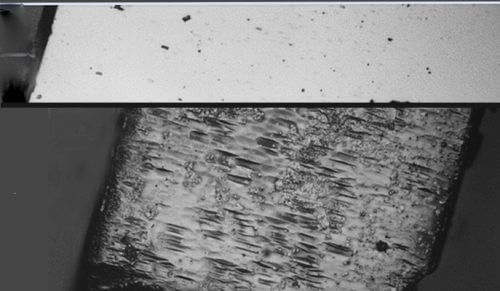What are the special properties that allow hallide perovskites to convert solar energy into electricity so efficiently?

They are the "next big thing" in the field of solar energy, but what are the special properties that allow these materials to convert solar energy into electricity so efficiently? A new study by scientists from the Weizmann Institute dispels some of the mystery surrounding halide perovskites.
Perovskites are a family of materials with a unique crystalline structure, used, among others, by the electronics industry. A mineral with this structure was first identified in the Ural Mountains in Russia in 1839 and was named after the Russian mineralogist, Count Lev Perovsky.
In 2009, Japanese scientists discovered that hallide perovskites - that is, perovskites containing atoms of chlorine, bromine or iodine in their crystal - are capable of absorbing sunlight and turning it into electrical energy. Since then, research in the field has progressed at a dizzying pace, and today dozens of companies around the world are competing among themselves to be the first to commercially produce solar cells from these materials. At the same time, scientists, including researchers at the Weizmann Institute, are trying to understand what makes these materials so special.
The efficiency of solar cells made of halide perovskites jumped from an initial value of about 4% (in itself a high rate for an experiment with a new material), to 22% in 2016. "We have been researching solar cells for four decades, and we have never seen such a dramatic increase," says Prof. ' David Kahn from the Department of Materials and Surfaces, who led the research group with Prof. Gerry Hoods and Prof. Igor Lubomirsky from the same department and Prof. Dan Oron From the Department of Physics of Complex Systems.
Solar cells today are mostly made of silicon, the efficiency of which reaches 17% in commercial cells and 26.5% in those produced in the laboratory. Silicon is mainly effective in converting the energy of red and infrared light, but not of most visible light waves - and especially not light waves in the blue and green range. Hallide perovskites can increase the utilization of visible light. In the future it will be possible to combine them with silicon, thus increasing the efficiency of solar cells.
Moreover, perovskite solar cells can be produced cheaply and simply at room temperature. This is in contrast to silicon cells, the production of which requires high heat and complex technology. "Hylide perovskites are a dream come true in the field of optoelectronic materials," says Prof. Kahn.
But the source of the high efficiency of these materials has been a mystery until now. Due to the relatively weak atomic bonds, the halide perovskites are soft like wood or bone - and part of their molecular structure is irregular. Nevertheless, in their electrical properties and conversion of solar energy into electricity they compete with hard semiconductors of the highest qualities.
These are unconventional materials, so an unconventional method was required in order to discover their properties"
One explanation that was proposed was that the halide perovskites have a property known as "ferroelectricity": that is, in the presence of a sufficiently high electric field, they become electrically polarized. Many efforts have been made to test whether this property indeed characterizes the hallide perovskites, but it could not be tested with the usual methods because the high electric field destroyed them.
However, asRecently reported in the scientific journal Proceedings of the National Academy of Sciences, USA, the institute's scientists found a way around the problem: they conducted experiments at a low temperature of minus 70 degrees Celsius, so that the cold conditions preserved the stability of the materials. In addition, they measured the conductivity of the material and not the storage of the electric charge as is customary in experiments of this type. The conductivity pattern allowed them to prove that these materials are indeed ferroelectric.
The scientists provided further proof by burning the surface of the material with acetone. Using this method, they revealed the existence of a structure typical of ferroelectric materials: structural units called "polar domains" - a kind of microscopic "bricks" a few nanometers or microns in size that have a negative charge on one side and a positive charge on the other. These units can prevent electrons excited by sunlight from returning to their previous energetic state. This feature is able to significantly reduce the conversion of solar energy into heat instead of electricity, and therefore it can explain the unprecedented efficiency of halide perovskites.
"These are unconventional materials, and therefore an unconventional method was required in order to discover their properties," says research student Yevgeny Rakita, the first author of the article alongside faculty scientist Dr. David Ahara. "This is an extremely rare combination: the halide perovskites are soft materials, but they behave like classic hard semiconductors." Elana Mirzadeh, Hadar Kesselsi, Yigal Peleg and Amri Bar-Eli also participated in the study.
The research findings open a window to the knowledge of the properties of soft semiconductors - and may contribute especially to a deep understanding of the ferroelectric property in these materials. Also, the research advances the understanding needed for the development of solar cells made of hallide perovskites.
